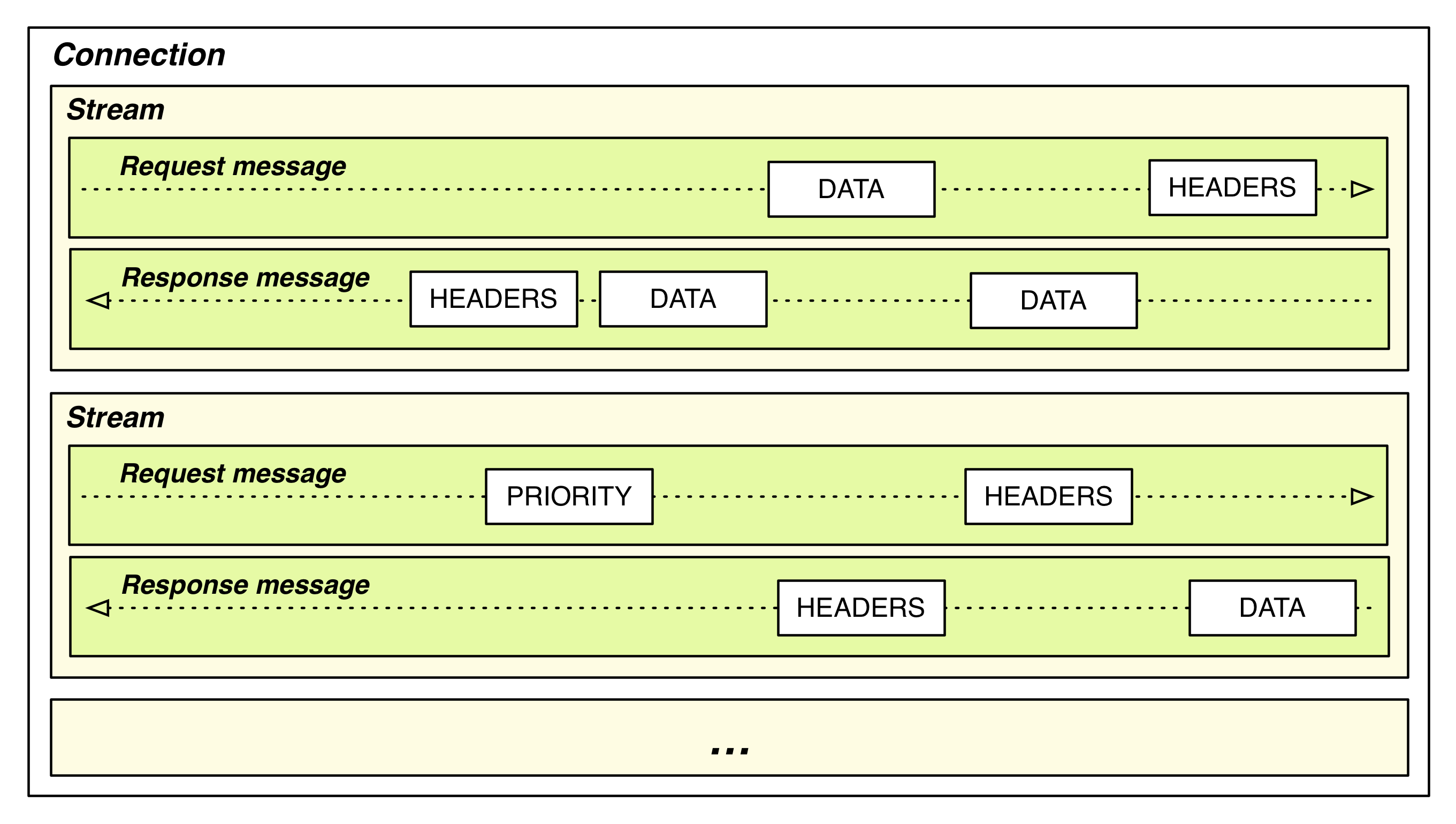- Request/Response multiplexing
- Each session can have many streams, each stream can transfer many messages in both direction. Each message is contained by many frames. Frame is the base unit.
- one connection per origin
- avoid "Slow-Start" on TCP
- better header compression
- keep track key-value header table on server/client side
- Server push
- server can create stream to client as well
- Header compression
- header tables with key/value and maintain on server/client side
- so no need to send the same header if it match previous request
- Flow control on each stream
High Performance Browser Networking CH12

